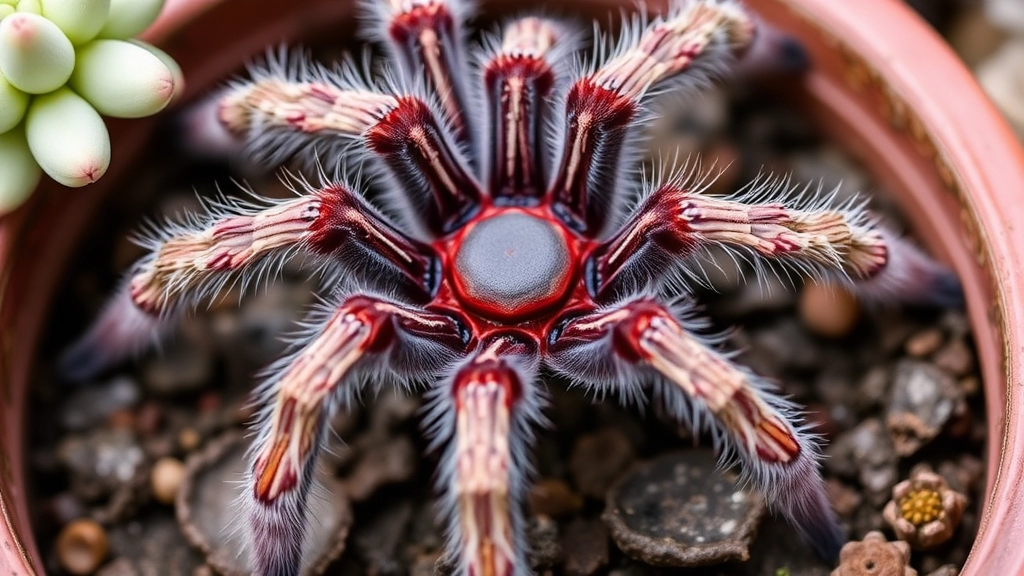Welcome to Your Ultimate Guide on Caring for the Kalanchoe ‘Spider Tarantula’
Welcome to your ultimate guide on caring for the Kalanchoe ‘Spider Tarantula.’ This unique succulent is not only visually striking but also relatively easy to maintain. Whether you’re a seasoned plant enthusiast or a novice, understanding the basics of its care can help you keep your Kalanchoe thriving.
Overview of Kalanchoe ‘Spider Tarantula’
The Kalanchoe ‘Spider Tarantula’ is known for its intricate, spider-like leaves and vibrant flowers. Originating from Madagascar, this plant has adapted well to indoor environments.
What You’ll Learn
In this article, we’ll explore everything from its ideal growing conditions to effective watering techniques, ensuring your Kalanchoe stays healthy and beautiful year-round.
Are you curious about the captivating Kalanchoe ‘Spider Tarantula’?
This unique succulent has been gaining popularity among plant enthusiasts for its striking appearance and relatively easy care requirements.
Kalanchoe ‘Spider Tarantula’ is a fascinating member of the Kalanchoe family, renowned for its distinctive foliage and vibrant blooms.
Key Characteristics:
– **Foliage**: The plant features elongated, fleshy leaves that grow in a rosette pattern, resembling spider legs.
– **Flowers**: It produces clusters of tubular flowers that can add a splash of colour to any indoor or outdoor space.
As we delve deeper into this remarkable plant, we’ll explore its origins and breeding information next. For more on succulent care, check out our [blooming succulent Kalanchoe care guide](https://planthq.org/blooming-succulent-kalanchoe-care-guide/) and learn how to [get Kalanchoe to bloom with our step-by-step guide](https://planthq.org/how-to-get-kalanchoe-to-bloom-stepbystep-guide/).
Origin and Breeding Information

So, where does Kalanchoe ‘Spider Tarantula’ come from?
This unique succulent hails from Madagascar, a hotspot for diverse plant species.
Kalanchoes are part of the Crassulaceae family, which is known for its hardy and drought-tolerant plants.
Breeding Background:
- Kalanchoe ‘Spider Tarantula’ is a hybrid, bred for its striking appearance and resilience.
- Breeders aimed to combine the best traits of various Kalanchoe species, resulting in this eye-catching variety.
The plant’s name reflects its quirky, spider-like foliage, which is a standout feature in any collection.
Key Points:
- Native to Madagascar.
- Hybrid bred for unique traits.
- Part of the Crassulaceae family.
Unique Features and Appearance
When considering the Kalanchoe ‘Spider Tarantula’, one might wonder what sets this succulent apart from the myriad of other varieties.
This plant is renowned for its striking appearance and distinctive characteristics.
- Leaf Structure: The leaves are elongated and have a unique, ruffled edge, giving them a spider-like appearance.
- Color Variations: They often exhibit a deep green hue, sometimes tinged with reddish or purple undertones, especially when exposed to bright light.
- Growth Habit: This succulent has a rosette growth pattern, with leaves that spiral outward, creating a visually appealing display.
- Size: Typically, the Kalanchoe ‘Spider Tarantula’ reaches a height of about 30-45 cm, making it an ideal choice for both indoor and outdoor settings.
- Texture: The leaves are thick and fleshy, a hallmark of many succulents, allowing them to store water efficiently.
The combination of these unique features not only makes the Kalanchoe ‘Spider Tarantula’ an attractive addition to any collection but also a conversation starter among plant enthusiasts. For those interested in similar unique varieties, exploring the top succulent Kalanchoe types can provide more inspiration. Additionally, if you’re curious about the care specifics for other Kalanchoe species, the different Kalanchoe species for your garden guide is a great resource.
Flowering Seasons and Characteristics
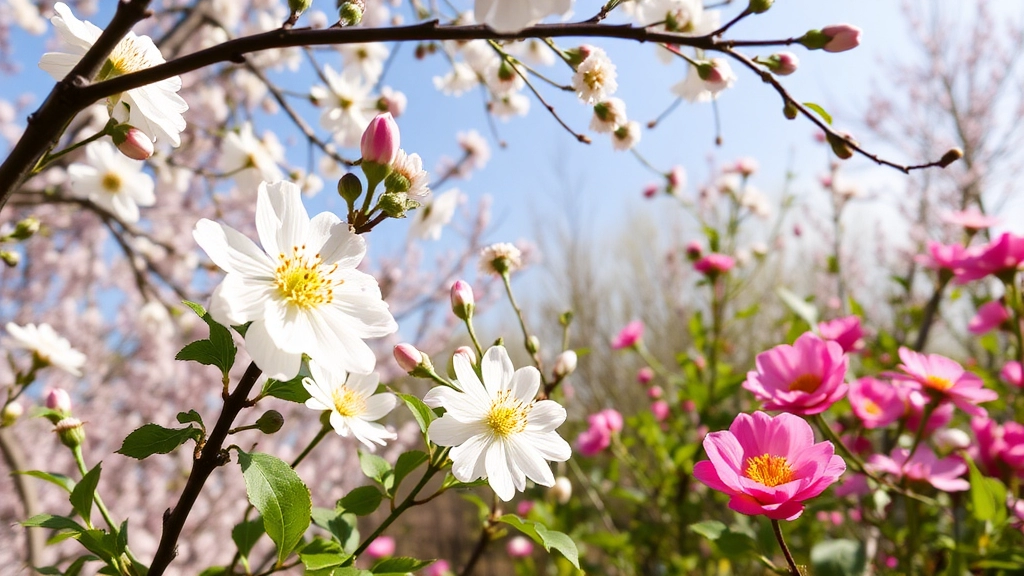
One of the most captivating aspects of Kalanchoe ‘Spider Tarantula’ is its flowering season. Many plant enthusiasts often wonder when they can expect these stunning blooms to grace their homes.
Flowering Season
Kalanchoe ‘Spider Tarantula’ typically flowers in the late winter to early spring. This timing aligns with its natural growth cycle, allowing it to thrive and showcase its vibrant flowers when the days start to lengthen.
Characteristics of the Flowers
The flowers of Kalanchoe ‘Spider Tarantula’ are truly a sight to behold. Here are some key characteristics:
- Shape: The flowers are tubular and bell-shaped, adding an interesting dimension to the plant.
- Colour: Expect a delightful array of colours, including shades of pink, red, and yellow.
- Size: Each flower cluster can be quite compact, making them easy to admire without overwhelming the plant’s overall appearance.
- Duration: Once they bloom, the flowers can last for several weeks, providing a prolonged display of beauty.
Care During Flowering
To ensure your Kalanchoe ‘Spider Tarantula’ thrives during its flowering season, consider the following tips:
- Light: Ensure it receives bright, indirect sunlight to promote healthy blooms.
- Watering: Maintain a moderate watering schedule, allowing the soil to dry out between waterings. Overwatering can lead to root rot, especially during this crucial period.
### Ideal Growing Conditions: Light and Temperature
When it comes to nurturing your Kalanchoe ‘Spider Tarantula’, understanding its ideal growing conditions is essential. Many plant enthusiasts often worry about the right light and temperature to ensure their plants thrive.
#### Light Requirements
Kalanchoe ‘Spider Tarantula’ flourishes under bright, indirect sunlight. Here are some key points to consider:
– **Direct Sunlight**: While it can tolerate some direct sun, too much can scorch its leaves.
– **Artificial Light**: If natural light is limited, using grow lights can be a viable alternative.
– **Location**: A south or west-facing window is often ideal.
For more detailed information, you can check out this [comprehensive Kalanchoe plant care guide](https://planthq.org/comprehensive-kalanchoe-plant-care-guide/).
#### Temperature Preferences
Temperature plays a crucial role in the overall health of your plant. Kalanchoe ‘Spider Tarantula’ prefers:
– **Daytime Temperatures**: Between 20°C to 25°C (68°F to 77°F).
– **Nighttime Temperatures**: Ideally, it should drop to around 10°C to 15°C (50°F to 59°F).
– **Avoid Extremes**: Keep it away from drafts, heating vents, and cold windows.
Maintaining the right light and temperature will not only keep your Kalanchoe healthy but also promote vibrant growth. For more tips, you might find this [guide on Kalanchoe post-flowering care](https://planthq.org/postflowering-care-tips-for-kalanchoe/) useful.
Soil Requirements and Potting Mix for Kalanchoe ‘Spider Tarantula’
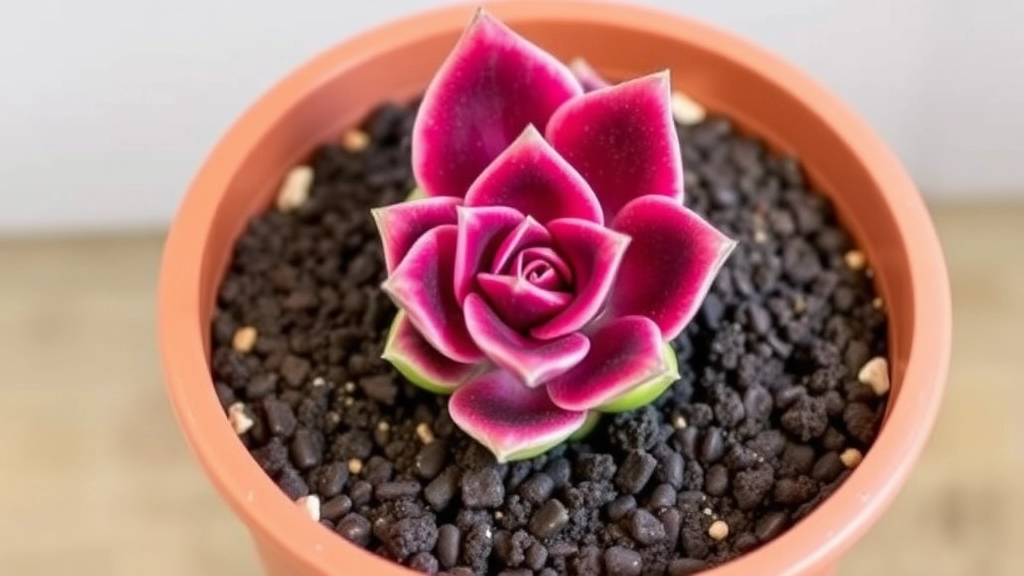
So, you’ve got your Kalanchoe ‘Spider Tarantula’ and you’re wondering what kind of soil it needs, right?
Let’s break it down.
Well-Draining Soil is Key
This plant thrives in soil that drains well. Why? Because standing water can lead to root rot, and we definitely don’t want that!
Best Soil Mix Options:
- Cactus Mix: A pre-made cactus or succulent mix is a great choice. It’s designed to provide the drainage your plant craves.
- DIY Mix: Want to get crafty? You can mix:
- 50% potting soil
- 25% perlite
- 25% coarse sand
This combo allows for good aeration and drainage.
Potting Considerations
- Pot Choice: Make sure your pot has drainage holes. This is non-negotiable!
- Size Matters: Choose a pot that’s just a tad larger than the root ball. Too big, and the soil might retain excess moisture.
In my experience, using the right soil mix not only helps your Kalanchoe flourish but also makes your gardening journey more enjoyable.
Watering Guidelines and Seasonal Adjustments
Understanding how to water your Kalanchoe ‘Spider Tarantula’ is crucial for its health and vibrancy. Many plant enthusiasts often worry about overwatering or underwatering their succulents.
Fertilization Schedule and Recommendations for Kalanchoe ‘Spider Tarantula’
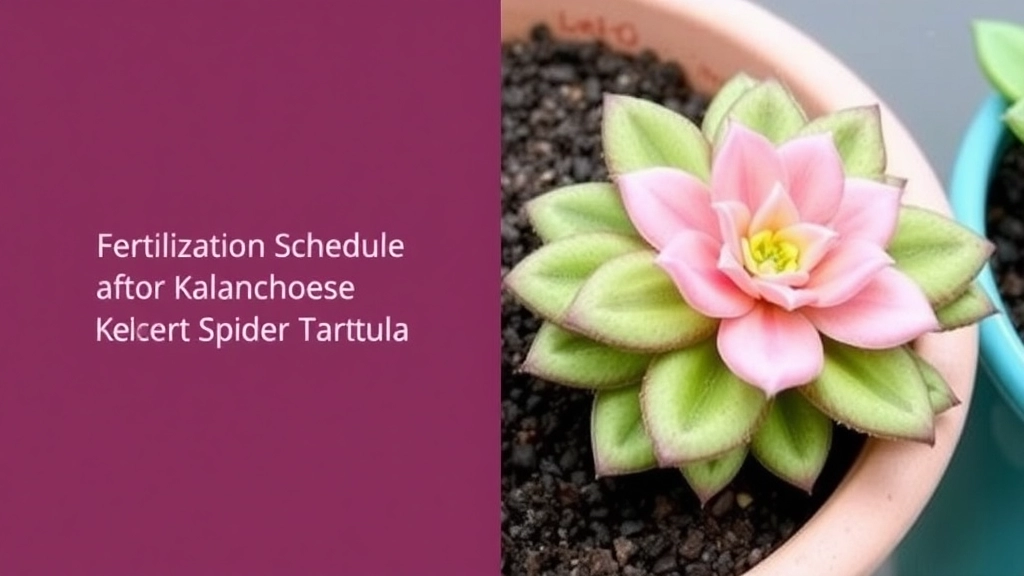
So, you’ve got your Kalanchoe ‘Spider Tarantula’ thriving, but are you giving it the food it needs to flourish?
Fertilization is key to keeping your plant vibrant and healthy.
Here’s how to nail it:
- Frequency:
- During the growing season (spring and summer), feed your Kalanchoe every 4-6 weeks.
- In the fall and winter, cut back on fertilization; your plant doesn’t need as much during its dormancy.
- Type of Fertilizer:
- Go for a balanced, water-soluble fertilizer.
- A ratio like 10-10-10 or 20-20-20 works wonders.
- You can also use a succulent-specific fertilizer for an extra boost.
- Dilution:
- Always dilute the fertilizer to about half the recommended strength.
- This prevents any potential root burn and keeps your plant happy.
- Application:
- Water your plant before applying fertilizer.
- This helps the roots absorb the nutrients without stress.
- Signs of Nutrient Deficiency:
- Yellowing leaves? That could mean your plant is craving nutrients.
- Stunted growth? Time to check your fertilization schedule!
Remember, too much of a good thing can be bad.
Monitor your plant’s response to fertilization and adjust accordingly.
When repotting your Kalanchoe ‘Spider Tarantula’, it’s essential to use a well-draining potting mix. For more detailed guidance on creating the perfect mix, you can refer to our [comprehensive guide on Kalanchoe paddle plant care](https://planthq.org/kalanchoe-paddle-plant-care-comprehensive-guide-tips/). Additionally, if you notice black spots on your plant, it might be beneficial to check out our [complete guide on treating black spots on Kalanchoe](https://planthq.org/how-to-treat-kalanchoe-black-spots-a-complete-guide/).
Propagation Methods: Stem Cuttings and Offsets
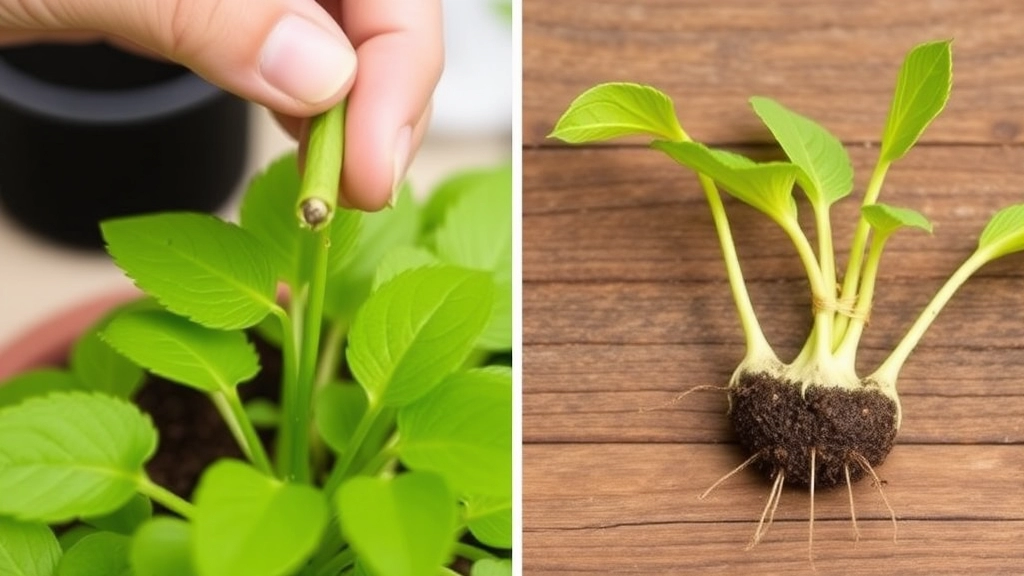
So, you’re ready to expand your Kalanchoe ‘Spider Tarantula’ collection?
Propagation is a fun and rewarding way to do just that.
Stem Cuttings
One of the easiest methods to propagate this stunning succulent is through stem cuttings. Here’s how to do it:
- Select a Healthy Stem: Look for a healthy, plump stem that’s free from pests or disease.
- Cut the Stem: Using clean, sharp scissors, cut a stem about 4-6 inches long. Make sure you cut just below a leaf node.
- Let It Callus: Place the cutting in a dry, warm spot for a few days. This allows the cut end to callus over, which helps prevent rot when planted.
- Plant It: Once callused, plant the cutting in a well-draining potting mix. Water it lightly and place it in bright, indirect light.
- Wait for Roots: In a few weeks, you should see roots developing. Keep the soil slightly moist but not soggy.
Offsets
Another nifty way to propagate your Kalanchoe is through offsets, which are small plants that grow at the base of the parent plant.
Here’s the scoop:
- Identify Offsets: Look for small rosettes around the base of your main plant.
- Gently Remove: Carefully twist or cut the offset away from the parent plant, making sure to include some roots if possible.
- Let Them Dry: Just like with stem cuttings, let the offsets dry out for a few days to avoid rot.
- Plant and Care: Plant them in a suitable potting mix, water lightly, and place them in a bright spot.
As we delve into the care of Kalanchoe ‘Spider Tarantula’, it’s crucial to address one of the most pressing concerns for plant enthusiasts: pests and diseases.
### Identifying Common Pests
Kalanchoe plants can attract a few unwelcome guests. Here are the most common pests you might encounter:
– **Mealybugs**: These small, white, cotton-like pests often cluster in leaf joints and can cause significant damage if left unchecked.
– **Aphids**: Tiny and green, aphids suck the sap from your plant, leading to stunted growth and curled leaves.
– **Spider Mites**: These minuscule arachnids thrive in dry conditions, leaving fine webbing on leaves and causing yellowing.
– **Scale Insects**: These pests appear as small, brown bumps on stems and leaves and can weaken your plant’s vitality.
### Disease Management
In addition to pests, Kalanchoe ‘Spider Tarantula’ may be susceptible to certain diseases:
– **Root Rot**: Often caused by overwatering, root rot can be fatal. Signs include wilting and a foul smell from the soil.
– **Powdery Mildew**: This fungal disease appears as white powdery spots on leaves, often due to high humidity and poor air circulation.
### Prevention and Treatment Strategies
To keep your Kalanchoe thriving, consider these effective strategies:
– **Regular Inspections**: Check your plant weekly for any signs of pests or disease.
– **Proper Watering**: Ensure the soil dries out between watering to prevent root rot.
– **Good Air Circulation**: Position your plant in a well-ventilated area to reduce humidity and prevent fungal growth.
– **Neem Oil**: A natural pesticide that can effectively manage pests like mealybugs and aphids.
– **Insecticidal Soap**: This can be used to treat infestations without harming the plant.
For more detailed information on dealing with specific issues like [treating brown spots on Kalanchoe leaves](https://planthq.org/how-to-treat-brown-spots-on-kalanchoe-leaves-effectively/) or [why Kalanchoe leaves turn red](https://planthq.org/why-kalanchoe-leaves-turn-red-causes-and-solutions/), be sure to check out our comprehensive guides.
Safety and Toxicity Concerns for Pets
So, you’ve got your beautiful Kalanchoe ‘Spider Tarantula’ sitting pretty in your home, and you’re probably wondering, “Is it safe for my furry friends?”
Let’s dive into the nitty-gritty of safety and toxicity.
Is Kalanchoe Toxic to Pets?
Yes, Kalanchoe plants can be toxic to pets, particularly cats and dogs.
Here’s what you need to know:
- Symptoms of Toxicity: If your pet nibbles on the leaves, you might notice symptoms like vomiting, diarrhea, or lethargy.
- Severity: While it’s not usually life-threatening, it’s best to keep an eye on them and consult a vet if you see any concerning signs.
Keeping Your Pets Safe
To ensure your pets stay safe around your Kalanchoe ‘Spider Tarantula’, consider these tips:
- Location: Place your plant in areas that are out of reach from curious paws.
- Training: Teach your pets to stay away from your plants. A firm ânoâ can go a long way.
- Alternatives: If your pet loves to chew on greens, consider pet-safe plants like spider plants or cat grass.
What to Do If Your Pet Ingests Kalanchoe
If you suspect your pet has ingested any part of the Kalanchoe, here’s what to do:
- Stay Calm: Panicking won’t help.
- Observe: Keep an eye on your pet for any symptoms.
- Contact a Vet: If you notice any symptoms, call your vet for advice.
For more detailed information on how to protect your pets, check out our essential safety guide on Kalanchoe toxicity. Additionally, if you’re interested in other Kalanchoe varieties, our complete guide to growing Kalanchoe ‘Mother of Thousands’ is a great resource.
FAQs on Kalanchoe ‘Spider Tarantula’
What is the origin of Kalanchoe ‘Spider Tarantula’?
The Kalanchoe ‘Spider Tarantula’ originates from Madagascar, a region known for its diverse plant species. It belongs to the Crassulaceae family, which includes many hardy and drought-tolerant plants.
Is Kalanchoe ‘Spider Tarantula’ a hybrid?
Yes, Kalanchoe ‘Spider Tarantula’ is a hybrid. It has been bred to combine the best traits of various Kalanchoe species, resulting in its unique and striking appearance.
When does Kalanchoe ‘Spider Tarantula’ flower?
The flowering season for Kalanchoe ‘Spider Tarantula’ typically occurs from late winter to early spring. This timing aligns with its natural growth cycle.
What do the flowers of Kalanchoe ‘Spider Tarantula’ look like?
The flowers are tubular and bell-shaped, available in shades of pink, red, and yellow. Each flower cluster is compact, and the blooms can last for several weeks.
What type of soil does Kalanchoe ‘Spider Tarantula’ need?
Kalanchoe ‘Spider Tarantula’ thrives in well-draining soil. A pre-made cactus or succulent mix is ideal, or you can create a DIY mix using 50% potting soil, 25% perlite, and 25% coarse sand.
How often should I fertilize my Kalanchoe ‘Spider Tarantula’?
During the growing season (spring and summer), fertilize every 4-6 weeks with a balanced, water-soluble fertilizer. In the fall and winter, reduce fertilization as the plant enters dormancy.
Can I propagate Kalanchoe ‘Spider Tarantula’?
Yes, you can propagate Kalanchoe ‘Spider Tarantula’ using stem cuttings or offsets. Both methods involve allowing cuttings or offsets to callus before planting them in well-draining soil.
What are the key care tips during the flowering season?
Ensure your Kalanchoe ‘Spider Tarantula’ receives bright, indirect sunlight and maintain a moderate watering schedule, allowing the soil to dry out between waterings to avoid root rot.
What pot should I use for my Kalanchoe ‘Spider Tarantula’?
Choose a pot with drainage holes to prevent water from accumulating. The pot should be slightly larger than the root ball to avoid excess moisture retention.
What signs indicate nutrient deficiency in Kalanchoe ‘Spider Tarantula’?
Yellowing leaves and stunted growth are common signs of nutrient deficiency. Adjust your fertilization schedule and ensure you are using a balanced fertilizer to address these issues.
References
-
Kalanchoe ‘Spider Tarantula’
-
Growing Guide for Kalanchoe ‘Spider Tarantula’
-
Care Guide for Kalanchoe ‘Spider Tarantula’
